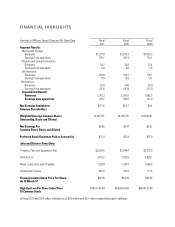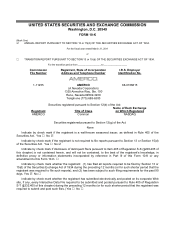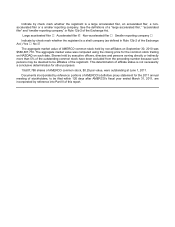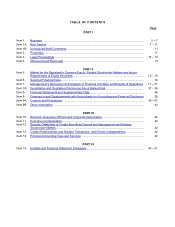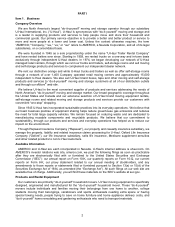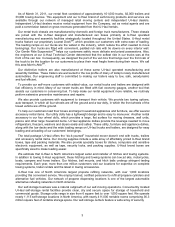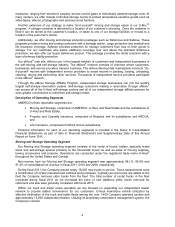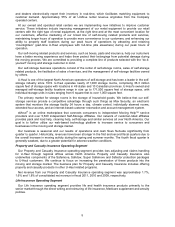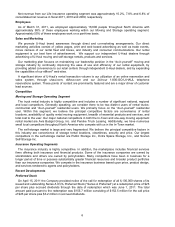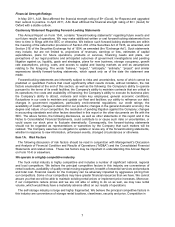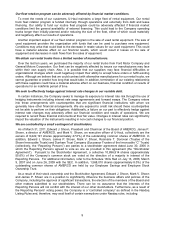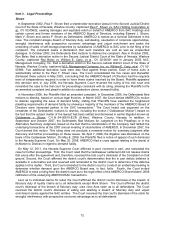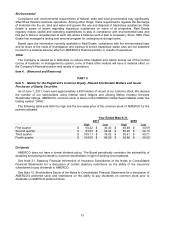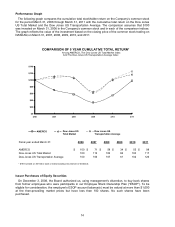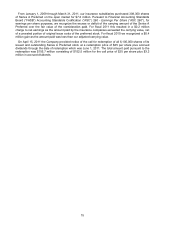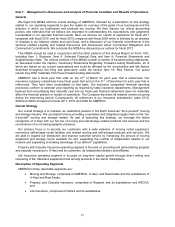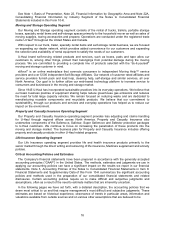U-Haul 2011 Annual Report Download - page 13
Download and view the complete annual report
Please find page 13 of the 2011 U-Haul annual report below. You can navigate through the pages in the report by either clicking on the pages listed below, or by using the keyword search tool below to find specific information within the annual report. 8
the market areas in which we operate is significant and affects the occupancy levels, rental rates and
operating expenses of our facilities. Competition might cause us to experience a decrease in occupancy
levels, limit our ability to raise rental rates or require us to offer discounted rates that would have a
material affect on results of operations and financial condition. Entry into the self-storage business may
be accomplished through the acquisition of existing facilities by persons or institutions with the required
initial capital. Development of new self-storage facilities is more difficult however, due to land use, zoning,
environmental and other regulatory requirements. The self-storage industry has in the past experienced
overbuilding in response to perceived increases in demand. We cannot assure you that we will be able to
successfully compete in existing markets or expand into new markets.
We are highly leveraged.
As of March 31, 2011, we had total debt outstanding of $1,397.8 million and total undiscounted lease
commitments of $398.8 million. Although we believe that additional leverage can be supported by the
Company’s operations, our existing debt could impact us in the following ways among other
considerations:
• require us to allocate a considerable portion of cash flows from operations to debt service
payments;
• limit our flexibility in planning for, or reacting to, changes in our business and the industry in
which we operate;
• limit our ability to obtain additional financing; and
• place us at a disadvantage compared to our competitors who may have less debt.
Our ability to make payments on our debt depends upon our ability to maintain and improve our
operating performance and generate cash flow. To some extent, this is subject to prevailing economic
and competitive conditions and to certain financial, business and other factors, some of which are beyond
our control. If we are unable to generate sufficient cash flow from operations to service our debt and meet
our other cash needs, we may be forced to reduce or delay capital expenditures, sell assets, seek
additional capital or restructure or refinance our indebtedness. If we must sell our assets, it may
negatively affect our ability to generate revenue. In addition, we may incur additional debt that would
exacerbate the risks associated with our indebtedness.
Economic conditions, including those related to the credit markets, may adversely affect our
industry, business and results of operations.
The United States economy has undergone a period of slowdown and unprecedented volatility, which
resulted in a recession. It is difficult to gauge the pace of the economic recovery or if such recovery may
weaken in the future. Consumer and commercial spending is generally affected by the health of the
economy. Our industries, although not as traditionally cyclical as some, could experience significant
downturns in connection with or in anticipation of, declines, or sustained lack of recovery, in general
economic conditions. In times of declining consumer spending we may be driven, along with our
competitors, to reduce pricing which would have a negative impact on gross profit. We cannot predict if
another downturn, or sustained lack of recovery, in the economy may occur which could result in reduced
revenues and working capital.
Should credit markets in the United States tighten or if interest rates increase significantly we may not
be able to refinance existing debt or find additional financing on favorable terms, or at all. If one or more
of the financial institutions that support our existing credit facilities fails, we may not be able to find a
replacement, which would negatively impact our ability to borrow under credit facilities. While we believe
that we have adequate sources of liquidity to meet our anticipated requirement for working capital, debt
servicing and capital expenditures through fiscal 2012, if our operating results were to worsen significantly
and our cash flows or capital resources prove inadequate, or if interest rates increase significantly, we
could face liquidity problems that could materially and adversely affect our results of operations and
financial condition.


